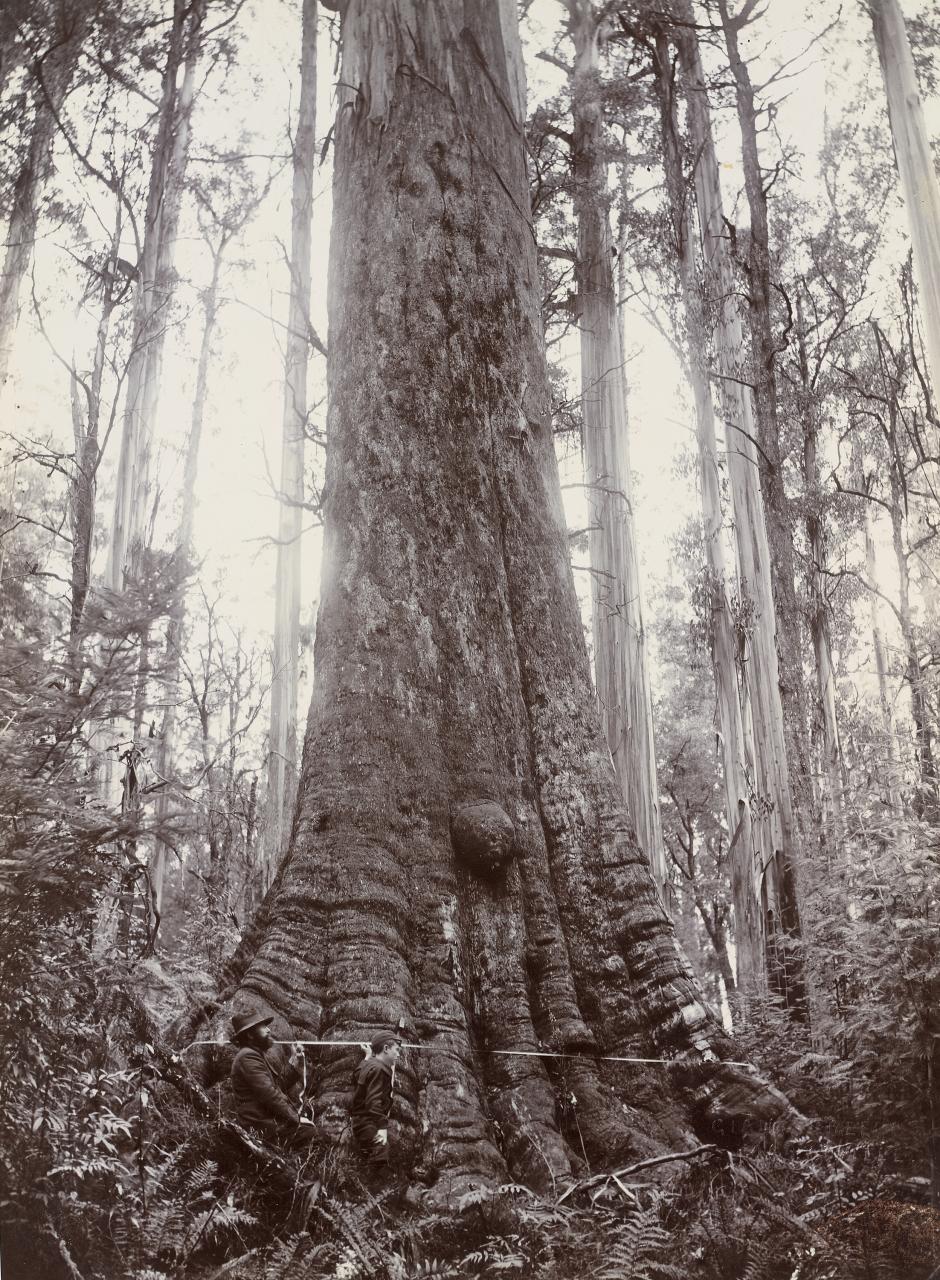The giant trees of "Victoria have from time to time excited a little interest among botanists and others interested in their study. "Big Ben" and "Uncle Sam" on the Black Spur, "Old Joe" at Stony Creek, Lorne, and the "Neerim Giant"; also "Hercules," at Wynstay, Gippsland. Of
these few, only "Uncle Sam" and "Old Joe" remain with us. The others, for Want of protection, have been destroyed by fire. That there are probably a few great giant eucalypts yet in existence in our forests is evident from the recent discovery of the tree which is illustrated in the present number of "The Leader." It is situated eleven miles from Marysville, near the Cumberland Falls, in a flat of exceedingly rich soil, surrounded by very high hills. Its elevation from sea level is about 2000 feet. It is a fine specimen of the White Manna Gum (Viminalis)', and measures about 6 feet up the . trunk with
the tape tightly drawn 58 feet. It has in its time been a very tall tree, as the top, from decay, has been blown down at about 180 feet high.- The trunk at that height... is of great thickness, probably, 4 or 5 feet through. From observations made in California by experts, and by scientific men in Victoria, the age of these giant trees vary from 1200 to 2000 years. A tree over 40 feet girth on the Black Spur, when felled and a 3-inch slab was cut from it, numbered 1200 rings from the core to the outer -edge of the bark. "These vast forests of the Great Dividing Range appear to be the natural home of many members of the eucalypti family. Gigantic specimens of the Mountain Ash (Stuartiana), and the Great Black Butt (Pillularis) are here met with, surrounded by many of their own offspring, measuring 20 to 30 feet girth. Thousands of these great trees are to be found destroyed by bush fires, standing as black, charred monuments of some terrific conflagration in the past. In contrast to" these are to be seen
thousands of white spectral giants, uncling.' but dead, the cause of which has elicited considerable discussion among those interested in the subject. The most recent" conclusion arrived at is that their decease is caused by certain species of the insect borer. The Cumberland Giant was discovered recently by Mr. Chester, a gold prospector, who informed Cr. John Keppell, of Marysville, of the same, and who succeeded in finding it. Arrangements, no doubt, will be made during the coming spring and summer for the conveyance of visitors to see this marvellous plant, which has probably stood where it now stands since the commencement of the Christian era.


 RSS Feed
RSS Feed
